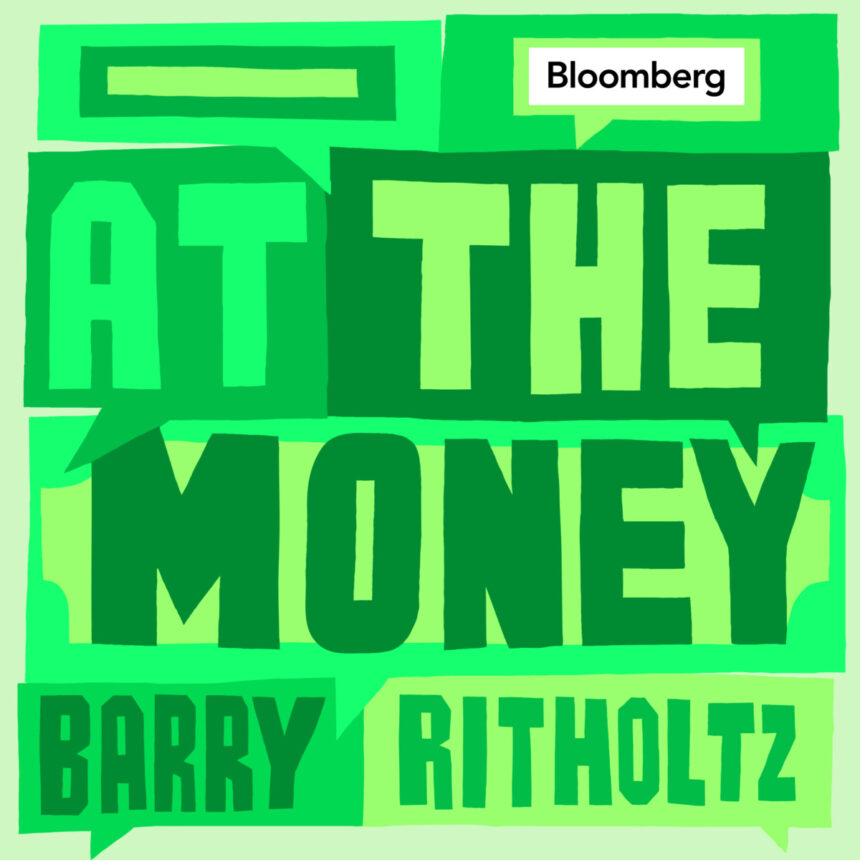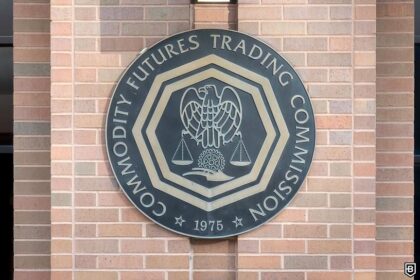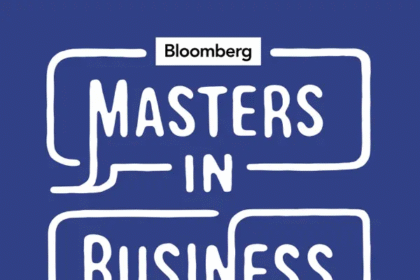At The Money: The Flood of New ETFs (October 1, 2025)
There will be nearly 1,000 new ETFs issued this year. Most of these are NOT the usual low-cost passive indices, but tend to be complex, expensive active funds in an ETF wrapper. These include leveraged directional bets, options, derivatives, and a whole raft of exotic strategies.
Full transcript below.
~~~
About this week’s guest:
Dave Nadig is President and Director of Research at ETF.com, and he shares with us how investors should navigate all of these new products. Dave helped design and market some of the first exchange-traded funds. He is the author of “A Comprehensive Guide to Exchange-Traded Funds” for the CFA Institute.
For more info, see:
~~~
Find all of the previous At the Money episodes here, and in the MiB feed on Apple Podcasts, YouTube, Spotify, and Bloomberg. And find the entire musical playlist of all the songs I have used on At the Money on Spotify
TRANSCRIPT:
Intro: “We’re waiting for the flood, We′re waiting for the flood, We′re waiting for the flood, We’re waiting for the flood“
Barry Ritholtz: There were 600 new ETFs launched in the first eight months of 2025. And it’s gonna get worse because so many more ETFs are coming out next year. The growth has been explosive. What does this mean for investors?
I have the perfect person to discuss this with. Dave Nadig is president and head of research at ETF.com. He has been tracking the ETF industry pretty much since his its beginning and is well known as an expert in the space.
So Dave, let’s talk a little bit about what’s been going on. Most ETF assets are and will likely continue to be cheap, index based products. That’s the legacy for investors: Low cost beta. Is this the future of ETFs or are we going in a different direction?
Dave Nadig: I think most of the money is gonna continue to flow into low cost asset allocation targets, right? The S&P 500 broad bonds, broad commodities at very, very cheap institutional prices. It’s just hard to beat that. It’s one of the best deals going in asset management in the investing world.
And so whether you’re an individual mom and pop investor just trading your own account, or whether you’re the Harvard endowment, anything in between. Cheap beta is still probably gonna be important to your portfolio, and ETFs are gonna remain the best wrapper for that experience.
However, this industry is not gonna take that lying down and desperately wants to make money. Most of the new products, the new launches you talked about, the 600 will probably have 800, 900 by the end of the year. Almost all of those products are very expensive. Doesn’t mean some of them aren’t good, but they’re all very expensive.
Barry Ritholtz: Let’s talk about that. New products are coming out with what you described as quote, insanely high fees that the big revenue winners are likely not the firms you think of when someone says ETF at a cocktail party.
What does this mean for investors? What does this mean for the industry? Are there really massive profits to be had here?
Dave Nadig: There are pretty huge profits to be had here. And if you look at where I, I like to look at revenue based on flow. Meaning like last month, X amount of money came in, what was the revenue implied by that money and the implied revenue of the industry?
Now has, you know, probably about 25% of the implied revenue from Flow is going to products that cost over 1%. (Really?!)
So that means there are a lot of investors buying products that cost over 1%. And the reason that’s an issue for investors is not that nothing is worth that fee, but that what’s getting launched tends to be very speculative. We’re not talking about core investing, building blocks; we’re talking about ETFs that use leverage or ETFs that use the derivatives markets to shape your pattern of returns to get you more income than you might otherwise be able to, e.g., “Selling volatility” Those types of products are expensive and while they may be useful like, like a really sharp knife in the drawer can be really useful when you got that chicken bone you gotta get through. It’s not a one size fits all thing.
I have some concern that individual investors see the marketing from the industry, which is really exclusively focused on those expensive products and gets sort of suckered into ’em.
Barry Ritholtz: Let’s talk about what, what is transformative? What is innovative in ETFs over the past few years? What trends do you see shaping 2026 and beyond? What is the biggest new type of ETF that’s coming out?
Dave Nadig: There’s really three buckets of, of hot development from a, from a what could you as an investor target.
Crypto we have to talk about. Not only do we now have, um, hundreds of billions of dollars tracking crypto in various capacities, whether it’s spot Bitcoin, which is where most of those flows have gone, but now we’re talking about Ethereum and Solana. We’re talking about stake diversions where you’re taking your Solana and you’re putting it into a contract to earn fees off of or earn interest off of it. That ecosystem of crypto products is going to get very complex very quickly. The SEC has put out accelerated listing standards; default listing standards, which will allow probably the next 10 to 20 coins on the market cap list to be launched as spot ETFs. So those will all be launched within the next six to 12 months before you it gonna be a free for all
Barry Ritholtz: Before you move off crypto. I have to ask about BlackRock’s Ibit – it was 5 billion at launch. It’s something like 82 billion already. Is this the fastest ever asset accumulator of any ETF that’s been launched?
Dave Nadig: It’s pretty close if it’s not the winner. I, I certainly think on a, on a pure dollar basis, uh, I can’t think of anything that has had that kind of ramp. GLD when it first came out was one of the first to a billion and then the first to 5 billion, and that broke a lot of records. I think Ibit and Bitcoin as a class has really kind of blown all those things out of the water and it’s been, it’s been, I think, beneficial for the most part, and an orderly process.
I think having these Bitcoin ETFs has helped investors understand it. Um, I’m hearing from bigger as bigger institutions, bigger advisors, they love the ETF because it solves all of their custody issues, right?
Everything stays in the same account. They don’t have to worry about having on chain assets. So while crypto purists may not be into it, I think the average investor is way better suited to get their little bit of crypto exposure in that ETF wrapper. And, and you mentioned what the SEC is permitting, not just in crypto, but across the boards.
I, I read your regular writings and one of the things you had said is. We have a “Incredibly permissive launch environment.” What does this mean in terms of the sort of things we can see in ETFs, either with leverage two x three x in verse two x? What, what does this permissive environment mean for what ETFs are gonna get launched?
Dave Nadig: It means we’re gonna get a lot of ’em. We’re gonna launch “all the things,” as I like to say. (All the things!) Uh, the, the, the biggest thing we’ve had is this move towards single stock ETFs.
And, and for people who might be confused by that, it’s not that you’re buying an Apple ETF to invest in just Apple ’cause you can obviously just buy Apple to do that. You’re buying an Apple ETF that maybe gives you two x Apple exposure or minus. Two x apple exposure. So when it goes, you goes down, you go up, or you’re writing options on your Apple position so that you can get some extra income. Or you’re doing a combination of both so that you can only get, you know, you get 2X the upside and minus 1X the downside but with caps involved, ’cause you’re selling a lot of options along the way.
Anyway you can imagine mixing and matching these kinds of patterns of returns. The combination of leverage. Income and protection around a single stock is going to be launched. If you think about it, we’ve got 500 stocks in the S&P 500. There are about six different flavors you can think of for each individual stock. That’s a couple thousand ETFs we’re gonna have to keep track of, assuming there’s only one of each flavor, and this industry loves to compete against each other. Legitimately, I think by this time next year, we could have several thousand more ETFs than we do right now.
Barry Ritholtz: More ETFs than there are actually stocks.
Dave Nadig: Huge already. They’re absolutely, I mean, we’ve been under, we haven’t had 5,000 stocks in the Wilshire in a long time. I think 3,500. 500 or so.
We’re gonna see all those single stock products, which are, for the most part, trading vehicles, right? If you’re a day trader, there’s lots of value in there. If you are trying to, you know, monetize a long term position, there’s some value in those kinds of covered call strategies. They’re all very expensive. They’re very inappropriate for most long-term investor from an allocation perspective, but sharp, useful trading tools for a certain class of trader.
Barry Ritholtz: I keep reading some of the things you’re penning about share class relief. Explain what this means and why this is another flood of new ETFs that are coming out.
Dave Nadig: Let’s pick an example. Like DFA Dimensional was late to the ETF party, very well known sort of in the nineties for being one of those shops where you could only buy them through an advisor who’d gone through their coursework. They made the shift to convert some of their mutual funds to ETFs a couple years ago, and were very successful at it. Now, why didn’t they convert all of them? Because a lot of the DFA products end up in 401k plans. And if you’re in a 401k plan, that means you need to be able to get fractional shares, which is really easy in a mutual fund and impossible in an ETF.
The only way to get the efficiencies of the ETF structure into those mutual funds is a share class: an ETF share class pointing at the same pool of assets.
That’s how a lot of Vanguard ETFs are built. They had a patent, which is now expired. The SEC has 70 odd applications from other players in the industry to basically duplicate things the way Vanguard does. They’ve made it very clear that. Imminent, I would suggest by the end of the year, at the very latest, we’ll see this first one’s approved and that will then be a flood because that becomes a very, very simple boilerplate piece of paperwork to file a new share class and get it trading on NYSE, Nasdaq, or CBOE.
We’ll just see a lot of those. I would suspect by the end of the year, we could have maybe a thousand of those individual share class ETFs turned on if all of the people who have filed. Converted all or share classed all of the things they could. It would be about five or 6,000 new ETFs.
Barry Ritholtz: That’s really intriguing. I have to ask a question, and you’re the one who’s really schooled me on this. If mutual funds were created today, they probably wouldn’t be approved. Explain the problem with mutual funds and why ETFs are arguably so much superior.
Dave Nadig: Well, the biggest problem with funds is their tax fairness. It’s the issue with a fund is that if you as a big investor, let’s say you own 20% of the Dave Mutual Fund and you decide I’m terrible and you want out, well, the mutual fund me has to now go sell a bunch of securities to give you back your 20% of my fund all that cash that you’re gonna want.
That engenders generally a bunch of capital gains. Those capital gains now have to be distributed to. All the people who were left, the people you abandoned buried, they end up paying taxes ’cause you left because you created a capital gain for everybody. Now it’s not that those are taxes that would never be paid, it’s just you’re paying them earlier than you would otherwise ’cause you get to reduce your basis.
So. Individual investors in a mutual fund can often get tax distributions through no fault of their own, through no action of their own, simply because other investors go in and out in an ETF. That simply doesn’t happen. So it is a simply a fairer mechanism. The ETF also brings other things that are helpful, like the ability to wash out some cap gains by doing so-called creation redemption or heartbeat trading. That’s a little feature of ETFs that makes them very tax efficient. And of course liquidity and transparency and all those other things.
But the big reason mutual funds would probably get the kibosh today is they’re inherently less fair in terms of how they treat individual investors.
Barry Ritholtz: Even if I don’t sell my mutual fund, but other people have, I incur capital gains.
Dave Nadig: A hundred percent. Now you get, again, you get to change your basis. So when you go to sell, you’ll pay less tax gains. But I don’t know about you. I prefer paying taxes later, hopefully never, or maybe after I’m dead. But not today.
Barry Ritholtz: Final question. It sounds like the future of ETFs are pretty much anything. Anything you wanna do, sometimes cheap. Always very liquid, but can be accomplished very well with an ETF. Is this the future of asset management?
Dave Nadig: I think so, I think the ETF structure is the most efficient vehicle we’ve come up with for taking exposures and getting them traded on exchanges.
It’s hard for me to see how we’re going to make it any more efficient tokenization crypto. Sometime down the line, we’ll replace some of what we’ve done with ETFs, but we’ll largely duplicate it and it will just do it in a different fashion. The, the ETF structure is where you’re going to probably get almost all of your exposures for the foreseeable future with some very strange edge cases. Things like some private credit or maybe some real estate that you can’t trade daily. There’ll be some edge cases. Everything else is gonna be an ETF.
Barry Ritholtz: If we’re talking about the future of ETFs, we’re really talking about the future of asset allocation and investing.
For the most part, the big money is in the low-cost passive indexes that charge 3, 4, 5 basis points. But the fastest growing space in ETF-world are active funds. Our alternative funds are all sorts of niche. Areas, some of which are pretty pricey, a hundred, 125 basis points.
Directional bets leverage two x three x inverse bets. Those are really special use cases. Tread carefully if you’re playing in those spaces.
Use ETFs for what they’re really good at: Getting you low-cost exposure to inexpensive indices. Tread lightly when you go into the pricier, wilder stuff, those are potential accidents waiting to happen.
I’m Barry Ritholtz. You are listening to Bloomberg’s at the Money.
~~~
Find our entire music playlist for At the Money on Spotify.











